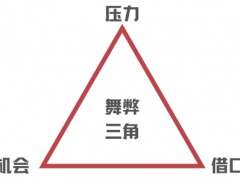據(jù)油價(jià)網(wǎng)7月22日消息稱,彭博新能源財(cái)經(jīng)在周三發(fā)布的《2021年新能源展望》報(bào)告中表示,如果想在2050年前實(shí)現(xiàn)凈零碳排放,未來(lái)30年,世界需要在綠色能源基礎(chǔ)設(shè)施和供應(yīng)方面投資173萬(wàn)億美元。
根據(jù)BNEF的數(shù)據(jù),如果各國(guó)政府和企業(yè)想要實(shí)現(xiàn)他們近幾個(gè)月來(lái)競(jìng)相承諾的2050年凈零排放目標(biāo),他們需要在未來(lái)30年投資92萬(wàn)億美元至173萬(wàn)億美元。
該研究公司表示,要想在2050年實(shí)現(xiàn)與凈零世界相適應(yīng)的能源轉(zhuǎn)型,需要迅速擴(kuò)大投資,并補(bǔ)充說(shuō),“實(shí)現(xiàn)凈零的途徑仍不確定。”
根據(jù)BNEF的說(shuō)法,為了實(shí)現(xiàn)凈零排放,全世界每年需要增加一倍以上的投資。這些投資將從目前每年約1.7萬(wàn)億美元躍升至“未來(lái)30年平均每年3.1萬(wàn)億至5.8萬(wàn)億美元之間”。
BNEF認(rèn)為,這十年對(duì)于讓世界走上實(shí)現(xiàn)《巴黎協(xié)定》目標(biāo)的軌道至關(guān)重要。
BNEF首席經(jīng)濟(jì)學(xué)家Seb Henbest說(shuō):“沒(méi)有時(shí)間可以浪費(fèi)了。如果世界要在本世紀(jì)中葉實(shí)現(xiàn)或接近實(shí)現(xiàn)凈零排放,那么我們需要加快部署這十年的低碳解決方案——這意味著更多的風(fēng)能、太陽(yáng)能、電池和電動(dòng)汽車,以及用于建筑物的熱泵,工業(yè)上的回收和更多的電力使用,以及將生物燃料用于航運(yùn)和航空。”
BNEF表示,資本支出將為投資者和金融機(jī)構(gòu)創(chuàng)造機(jī)會(huì),但沒(méi)有具體說(shuō)明誰(shuí)將為這筆巨額支出買(mǎi)單。
如果世界要將全球變暖控制在2攝氏度或以下,它總共需要至少 30 萬(wàn)億至 40 萬(wàn)億美元的投資,用于能源系統(tǒng)和鋼鐵和水泥制造業(yè)等眾所周知難以減少排放的行業(yè)的脫碳。這是Wood Mackenzie對(duì)支持越來(lái)越多國(guó)家實(shí)現(xiàn)能源轉(zhuǎn)型和凈零排放愿望所需投資的最低估計(jì)。
曹海斌 摘譯自 油價(jià)網(wǎng)
原文如下:
Net-Zero 2050 May Need Up To $173 Trillion Investments
The world will need to invest up to $173 trillion in greener energy infrastructure and supply over the next 30 years if it wants to achieve net-zero carbon emissions by 2050, BloombergNEF said in its New Energy Outlook 2021 report published on Wednesday.
If governments and companies want to see the coveted 2050 net-zero emissions they have been racing to pledge in recent months, they would need to invest between $92 trillion and $173 trillion in the next three decades, according to BNEF.
The energy transition that would be compatible with a net-zero world in 2050 would need rapid scaling of investment, the research firm says, adding that “the route to net-zero remains yet uncertain.”
According to BNEF, the world needs to more than double yearly investments in order to achieve net-zero emissions. Those investments should jump from around $1.7 trillion annually at present to “somewhere between $3.1 trillion and $5.8 trillion per year on average over the next three decades.”
BNEF believes that this decade will be critical to set the world on a track that could allow it to reach the Paris Agreement targets.
“There is no time to waste. If the world is to achieve or get close to meeting net-zero by mid-century, then we need to accelerate deployment of the low-carbon solutions we have this decade – that means even more wind, solar, batteries, and electric vehicles, as well as heat pumps for buildings, recycling and greater electricity use in industry, and redirecting biofuels to shipping and aviation,” BNEF chief economist Seb Henbest said.
Capital expenditures will create opportunities for investors and financial institutions, BNEF says, but didn’t specify who will foot the enormous bill.
If the world is to come anywhere close to limiting global warming to 2 degrees Celsius or below, it will need, collectively, a bare minimum of $30 trillion to $40 trillion of investment in energy systems and decarbonization of industries where emissions are notoriously hard to abate such as steel and cement making. That’s Wood Mackenzie’s bare-minimum estimate of investments needed to support the energy transition and the net-zero emission aspirations of a growing number of countries.
免責(zé)聲明:本網(wǎng)轉(zhuǎn)載自其它媒體的文章,目的在于弘揚(yáng)石化精神,傳遞更多石化信息,并不代表本網(wǎng)贊同其觀點(diǎn)和對(duì)其真實(shí)性負(fù)責(zé),在此我們謹(jǐn)向原作者和原媒體致以敬意。如果您認(rèn)為本站文章侵犯了您的版權(quán),請(qǐng)與我們聯(lián)系,我們將第一時(shí)間刪除。







